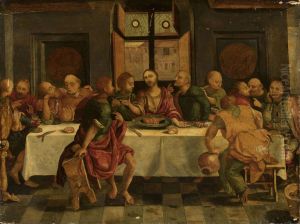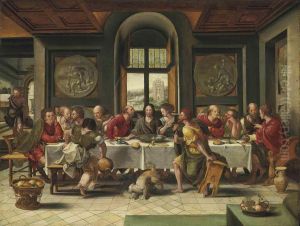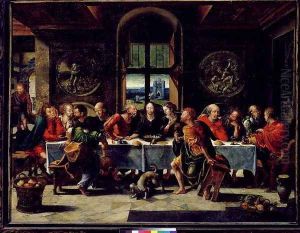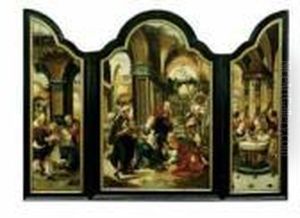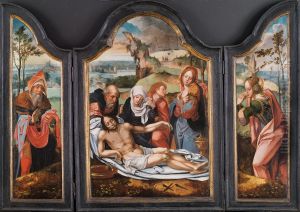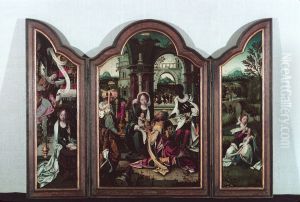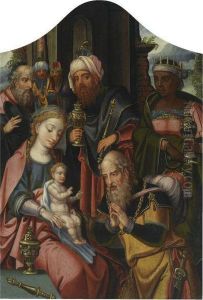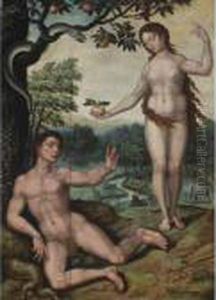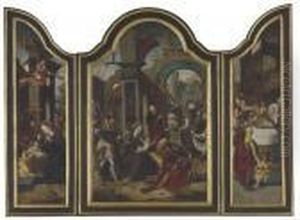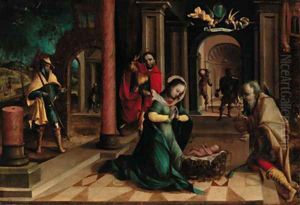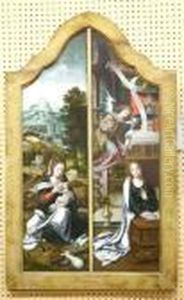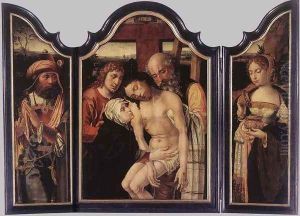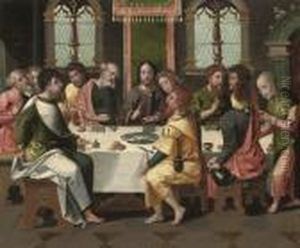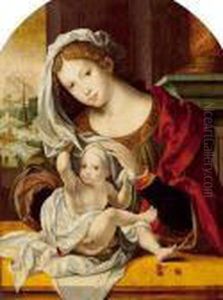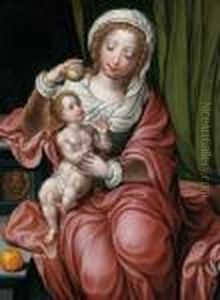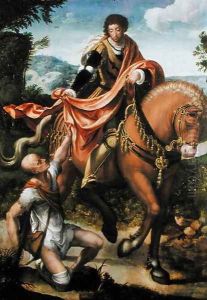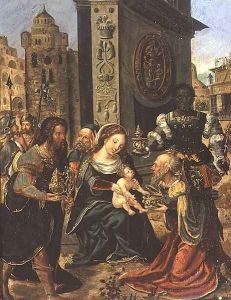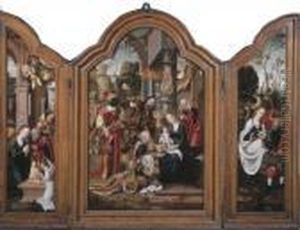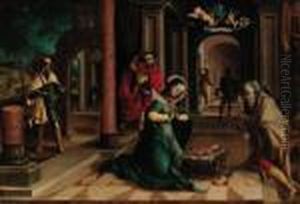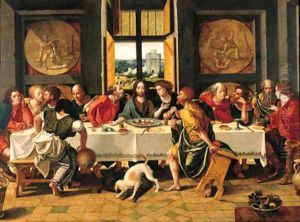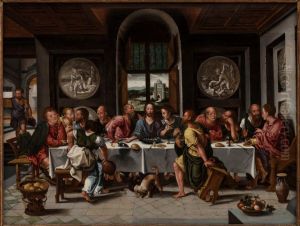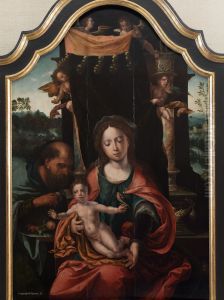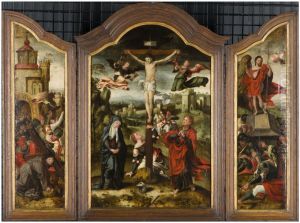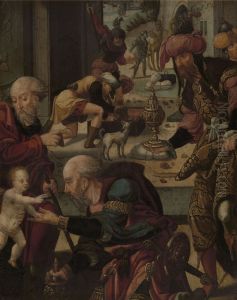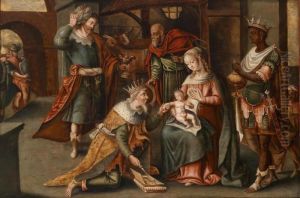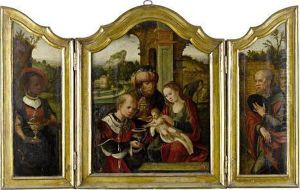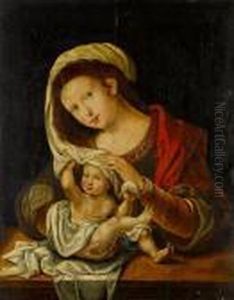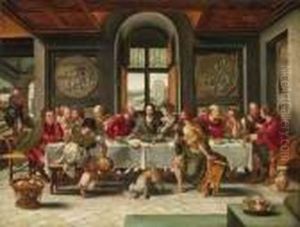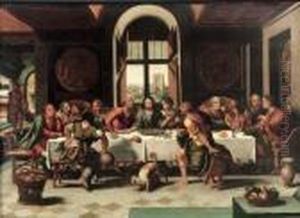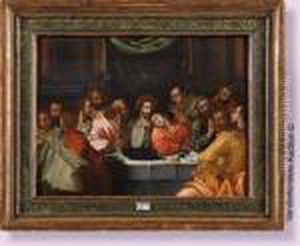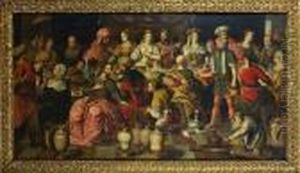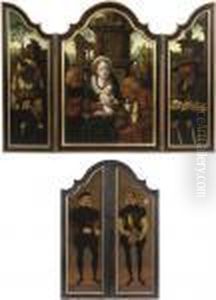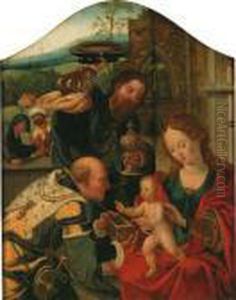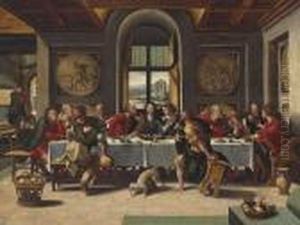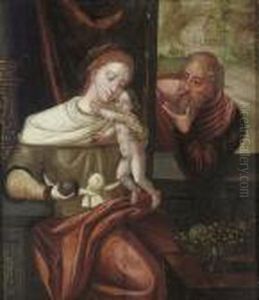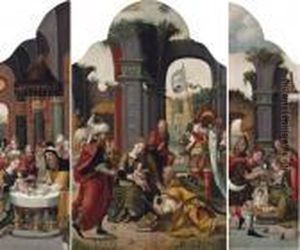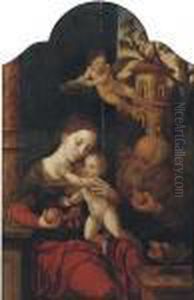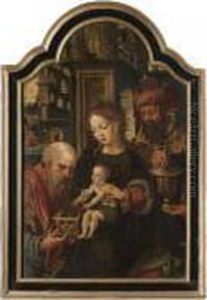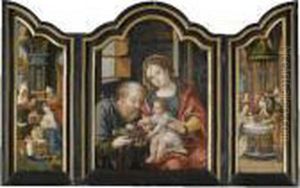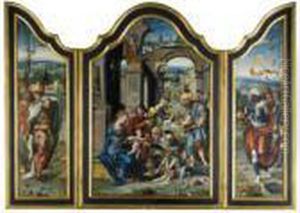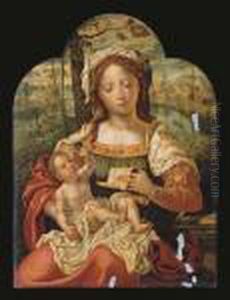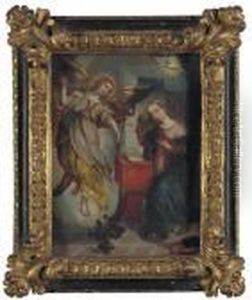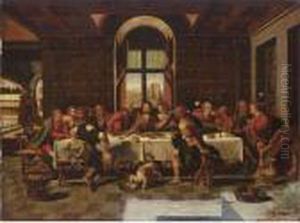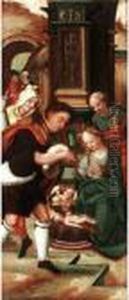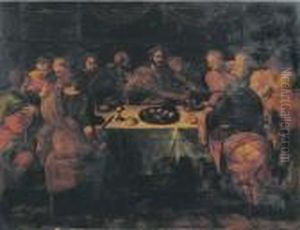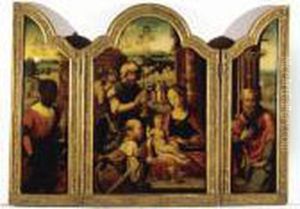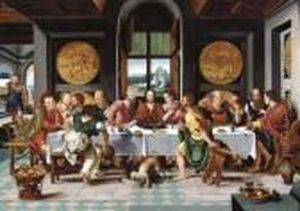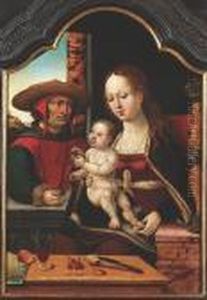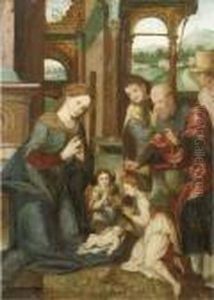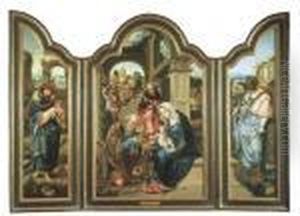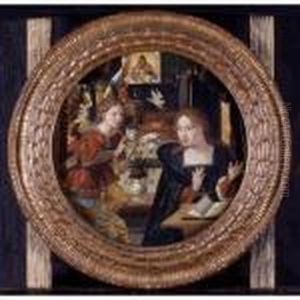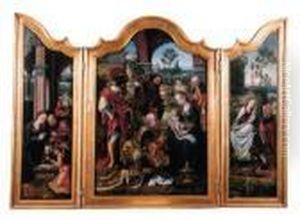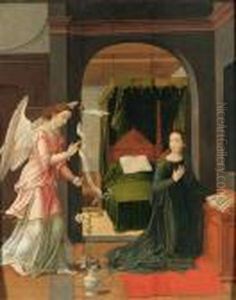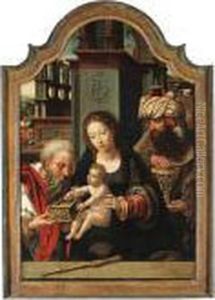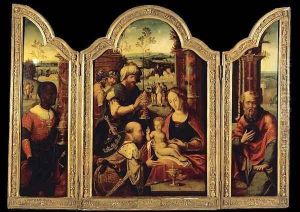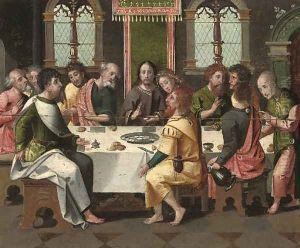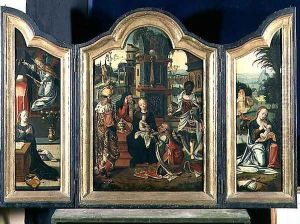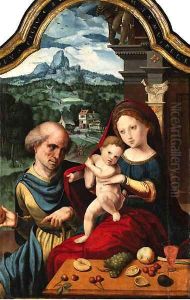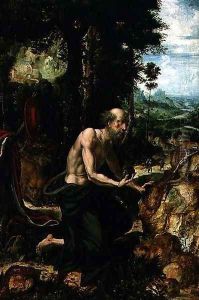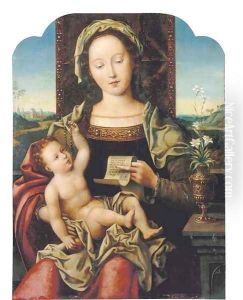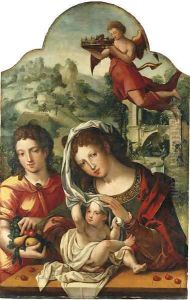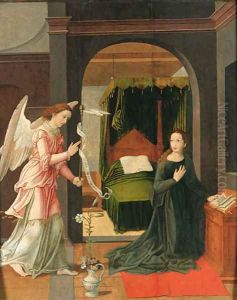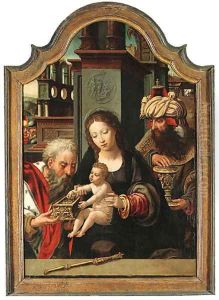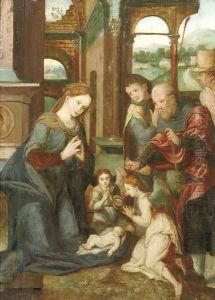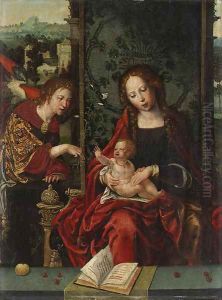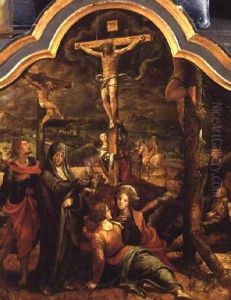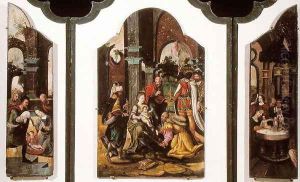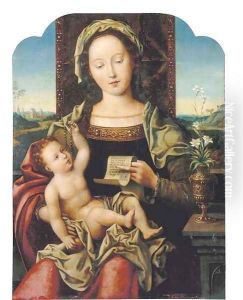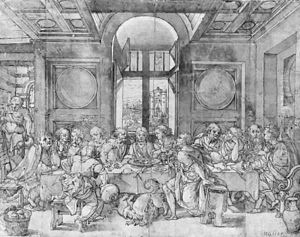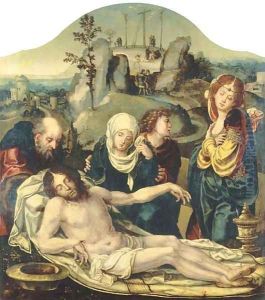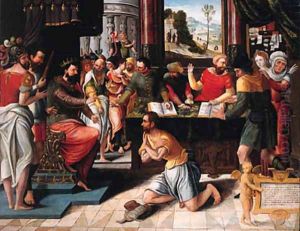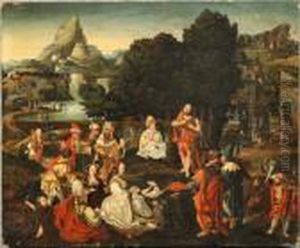Pieter Coecke Van Aelst Paintings
Pieter Coecke van Aelst was a Flemish painter, sculptor, architect, and designer of woodcuts, tapestries, and stained glass. Born in Aelst (now Aalst), Belgium, in 1502, he was an important and influential figure in Northern Renaissance art. Coecke van Aelst's initial training took place in his hometown, but little is known about his early life and education. However, it is believed that he moved to Antwerp to continue his training and work, which was a hub for art and commerce during the 16th century.
Coecke van Aelst's early works show the influence of the Antwerp Mannerists, a group of artists known for their ornate and complex style. However, he is mostly remembered for his later works, which reflect the influence of the Italian Renaissance. This is likely due to his travels to Italy, where he studied the work of Italian masters. His trip to Italy, which occurred around 1525-1527, was crucial for his artistic development. Upon his return to the Low Countries, Coecke van Aelst began to integrate Italian Renaissance elements into his work, blending them with Northern stylistic features.
In 1527, Coecke van Aelst married Anthonis van Palermo's widow, which helped him secure a workshop and a house in Antwerp. He became a master in the Guild of Saint Luke (the guild for painters and other artists) in 1527 as well. His workshop in Antwerp became well-known, and he employed several apprentices and assistants, one of whom was Pieter Bruegel the Elder, who would later marry his daughter Mayken. His works include altarpieces, triptychs, religious works, and he was especially renowned for his large-scale tapestry designs.
Coecke van Aelst was also a successful entrepreneur and scholar. He published translations of architectural treatises, which became essential for spreading Renaissance ideas in Northern Europe. His interest in architecture is also reflected in the architectural elements he incorporated into his paintings.
Sadly, Pieter Coecke van Aelst's life was cut short when he died in Brussels in 1550 at the age of 48. Despite his relatively short career, he left a significant legacy through his influence on other artists, his contribution to the spread of Renaissance styles north of the Alps, and his diverse body of work that included painting, tapestry design, and architecture.
